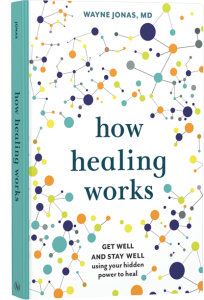Personal wholeness is the feeling of well-being that occurs when your body, mind, and spirit are in harmony and balance. Whether you are suffering from depression or recovering from a physical ailment, it is important that you develop a mind-body practice that supports your unique well-being and recovery.
In a year unlike any other—one filled with loneliness and isolation— it is critical to put yourself in a position of good overall health as well as nurture your body’s inherent ability to heal. Keep the following elements of integrative health in mind as you prepare for 2021 and look to improve your well-being in the weeks and months to come.
Integration of Mind-Body-Spirit
Think about a time when you felt most authentic. Perhaps it was a time when you were doing something that you felt was important and meaningful. It could include reaching a major milestone or completing a difficult task. It could also be something from daily life, like cooking a tasty meal or teaching a child to ride a bike.
From a Western perspective, wholeness arises from a deep personal point from which caring, communication and a sense of completeness can emerge. In Eastern systems, this is sometimes known as a vital energy that is transmitted among individuals. Regardless, when an experience of complete wholeness arises, a healing presence or unity occurs. When your internal environment is an Optimal Healing Environment, your physical body and the non-physical mind and spirit can be in tune. Activities that connect your physical body with your non-physical mind and spirit help to integrate your biological responses with your psychological responses. From these practices, you can experience a sense of wholeness that enhances recovery, resilience and the restoration of health.
Think Positive!
Are you critical of yourself and others? Do you see life in a “glass-half-empty” way? This year, it’s hard not to. Even so, it’s important to work to eliminate negative self-talk. Create a habit of thinking positively.
Self-talk is the stream of thoughts running through your head from the moment you wake up until you fall asleep. If your thoughts are mostly negative, it’s more difficult to cope with stressful situations. Instead of expecting the worst outcome of any situation, focus on the best. When you deal with life’s difficulties in a positive and productive way, you’ll reap health benefits including a longer lifespan, better resistance to illness and better mental and physical well-being.

The Energetic Connection
The experience of wholeness can be enhanced by “energy” techniques. Two of the oldest of these are the Chinese practice of Qi Gong and the ancient Indian practice of yoga. Qi Gong is a practice of meditation and body movements that are thought to accumulate and move “qi” (pronounced CHEE), or energy, in order to produce healing. Yoga is practiced in a variety of ways. Generally, the practice of yoga is a series of breathing and body movements that help induce order and the feeling of unity in the body. Research studies of yoga have shown that it can induce strong psychological and physiological effects, including reducing the effects of stress.
Healing Presence
In medical literature, there is a phenomenon called “the healing presence.” Religious and spiritual traditions from all cultures and all times describe a spiritual or loving presence as a contributor to healing. Have you ever experienced a calming, safe and peaceful feeling in the presence of another? If so, that was a healing presence.
Certain people exude or radiate a special kind of presence that creates an experience of recovery, wholeness, peace or well-being in people who suffer. Please note, the healing presence does not have to be exclusive to professionals, whether they are doctors, nurses or healers, or in fact any person other than you. It is something you can cultivate and call upon when you suffer or are in pain. You may also use it for the benefit of others. One of the first steps to developing your own healing intention is to be present in the moment with a clear and calm mind. Let go of all of the “noise in your head” and simply focus on the here and now. Being mindful of your thoughts and actions toward others and yourself is also a good way to begin to develop a healing presence. Are you too hard on yourself and others? Letting go of negative self-talk and critical thoughts about others is an important first step.
How to Experience Personal Wholeness:
There are techniques that you can learn called mind-body practices that once you learn them, you can do anywhere. These encourage you to tap into the connection between your thoughts and your physical responses in a positive way. Research has shown that these practices can be effective in reducing the negative effects of stress.
Many community centers, gyms, and private studios are now offering virtual classes on the following mind-body practices so they can be done in the safety and comfort of your own home.
- Breathwork: Controlling one’s breathing helps focus the mind, detach oneself from immediate reactions to thoughts, and make it easier to get in touch with one’s inner sense of peace and calm. It also induces multiple physiological and chemical effects such as altering heart rate, blood pressure, and cortisol (stress hormone) levels.
- Relaxation: Take a break from the chaos of daily life with mindless activities. This can include exercising, listening to music, or taking a nap. Relaxation isn’t only about peace of mind or enjoying a hobby, it is about letting your body—mentally and physically—escape from tension and anxiety, especially during the holidays.
- Yoga: Numerous studies attest to the benefits of yoga, the centuries-old mind-body practice, on a wide range of health-related conditions—particularly stress, mental health, and pain management. The most common conditions yoga therapists see are anxiety, back and neck pain, joint pain and stiffness, and hypertension.
- Meditation: Meditation involves focus and quieting your mind for several minutes or longer.
- Tai Chi: This moving meditation builds balance, coordination, strength, and functional capacity. It combines the use of slow and deliberate movements with meditation and breathing practice. Watch my new guided Tai Chi video.
- Imagery: This kind of meditation leads a person’s imagination into a particular state by describing a scene or place and invoking all of the senses. It is frequently used to address symptoms related to chronic health concerns, improve performance in sports, and invoke a relaxation response in the body.
- Journaling: Writing down your thoughts and experiences can help you make sense of your concerns and it can help create order out of any chaos. Journaling is a way of going on a retreat without leaving your home.
- Art: When people are experiencing intense, complex or confusing emotions, the use of art in a therapeutic setting can help them manage and communicate their feelings in ways that language cannot always accomplish.
Commit yourself to develop a mind-body practice and reap the rewards in the new year. 2021 might not seem all that different from the last 10 months as we’ve endured isolation and the coronavirus, but a new year grants us an opportunity to make a concerted effort to improve our well-being and ensure a mind-body connection that will keep us healthy and happy this winter.
 Take Your Health Into Your Own Hands
Take Your Health Into Your Own Hands
Drawing on 40 years of research and patient care, Dr. Wayne Jonas explains how 80 percent of healing occurs organically and how to activate the healing process.

